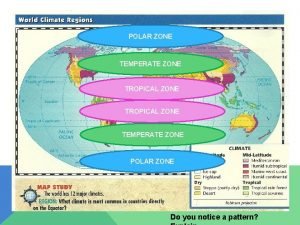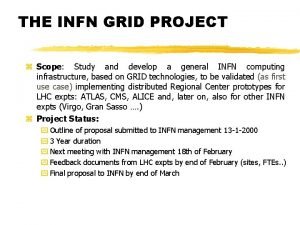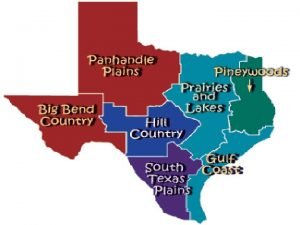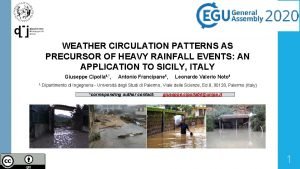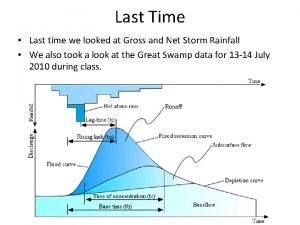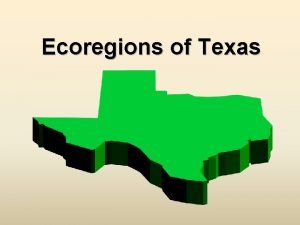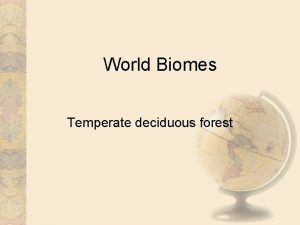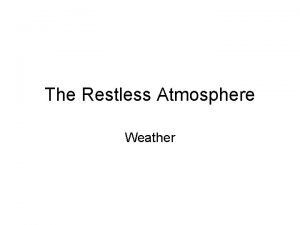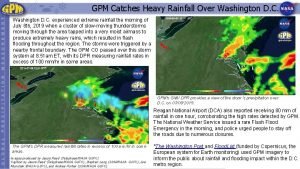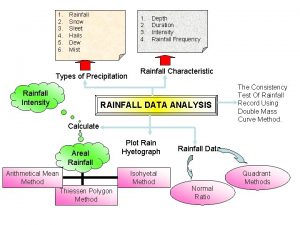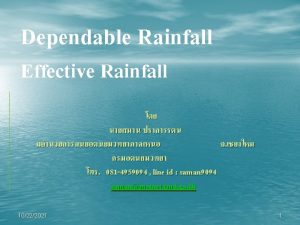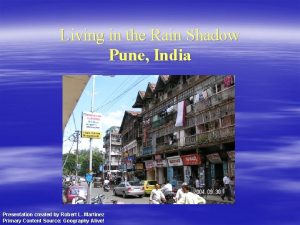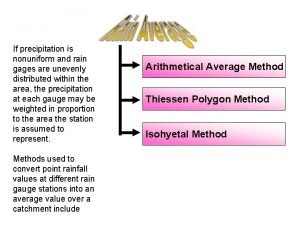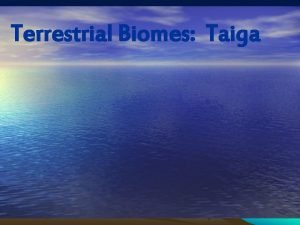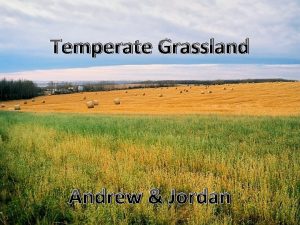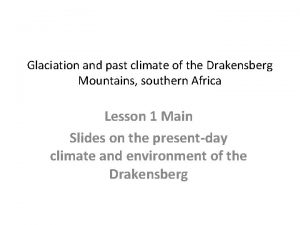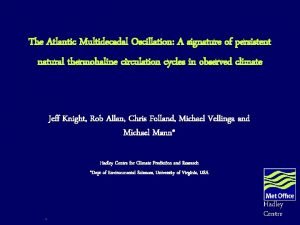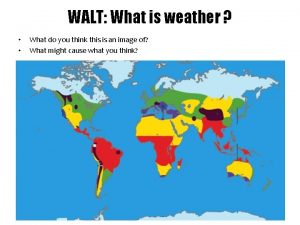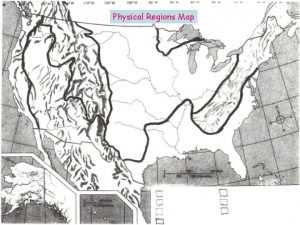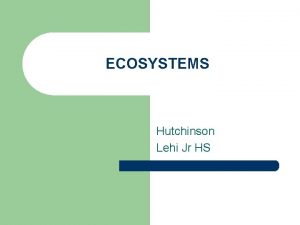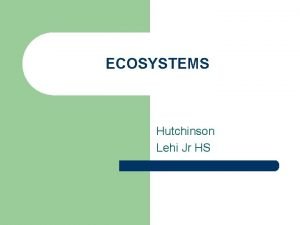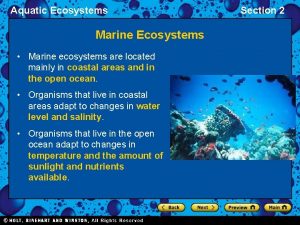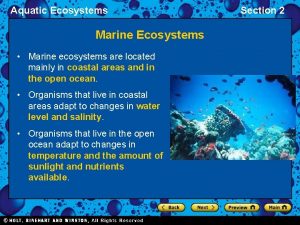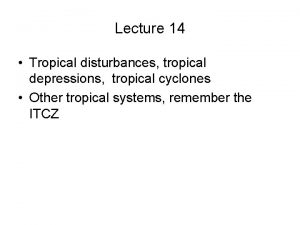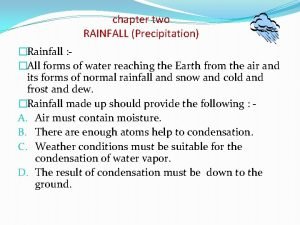Tropical ecosystems The delimitation of tropical regions rainfall
































- Slides: 32

Tropical ecosystems The delimitation of tropical regions: rainfall, evaporation, and temperature Seasonal versus daily temperature changes: -latitudinal gradient- frost occurrence at sea level -altitudinal temperature gradient in the tropics -separation of tropical plant formations according to temperature and rainfall Eco-climatic classifications The climate-diagramm (Gaussen-Walter) The Holdridge Life Zone concept Bailey’s humidity index Rainfall-evaporation comparisons Distribution of humid and seasonal dry forests General physiognomic changes along environmental gradients Rainfall (or water availability) 1) medium to high fertility; 2) low fertility Altitudinal gradients Flooding gradients Forest-poor regions in medium to high rainfall areas: the savannas operating factors- soil fertility, fire, flooding


Altitudinal temperature gradient (average year temperature ºC vs altitude m) in Venezuela measured in conventional meteorological stations ( • , o, x) or using Boussingaults method (∆). In tropical climates (daily temperature range larger than average monthly temperature range) soil temperature below 30 cm depth, under shade, corresponds to average annual temperature



Holdridges model of Eco-Climatic classification of potential vegetation


Relationship between forest vegetation and rainfall (y-axis) and durastion of the dry period in months (x-axis) in India. I. Evergreen and II. Semi-evergreen tropical rain forest, III. Monsoon forest (A. wetter, B. drier), IV. Savanna (thorn forest), V. Desert (from Walter Die Vegetation der Erde 1973)


Seasonal Forest Formation Series Decreasing Rainfall Dry Evergreen Formation Series

Increasing altitude Montane Forest Formation Series Seasonal. Swamp Formation Series


Critical structural and functional properties of tropical plant formations Diversity Facts and figures (Gentry et al. ) Explanations and theories Monodominant tropical forests Fertility, Flooding, Salinity, Symbiosis Mutualistic symbiosis Mycorrhiza: ectomycorrhizas and VAM N 2 -fixing associations: Rhizobia, Life-forms, biotypes, etc. The classical (and still working) Raunkiaer’s system Diversity and abundance of life -forms in different tropical climates Life-forms and ecosystem function in tropcial forests Productivity of tropical forests and their potential as carbon sinks Extension of forest plant communities and Net Primary Productivity Precision and uncertainties: operational models and underground productivity Carbon balance of the biosphere: Houghton’s and Field et al’s estimations


Changes in species diversity according to species intrinsic growth rate and frequency or intensity of disturbance Huston 1994)

Hypothesis on determination of species diversity based on intrinsic Growth rates and frequency or intensity of disturbance (Huston 1994)

Costa Rica West Malesia Inverse relationship between soil fertility and species richness (Huston 1994: Biological Diversity. Cambridge University Press Ghana Amazonas


Central role of micorrhyzal mutualistic symbioses in tropical forest nutrition Ectotrophic mycorrhiza----> highly specific ----> monodominant forests 1) in Africa: Gilbertiodendron dewevrei and Brachystegia laurentii (Zaire), Cynometra alexandri (Uganda) and Tetraberlinia tubmaniana (Liberia). 2) in tropical South America: Mora excelsa, M. gonggrijpi, and Eperua falcata (Trinidad and Guyana); Pentaclethra macroloba (Costa Rica). Vesicular arbuscular micorrhiza ----> promiscuous----> species rich forests


Diversity of Life-Forms, according to Ellenberg (1979) in tropical forests: notice the larger diversity in dry forests

Common life-forms of tropical forests associated with forest structure and function Ewel and Bigelow (1996) Denslow (1996) CANOPY TREES Dicot, long-lived trees Canopy and emergent trees Legumes Palms Emergents Dicot, short-lived tress Rosette trees (palms) UNDERSTORY TREES Understory trees Treelets Pioneer Understory SHRUBS AND HERBS Shrubs Herbs and shrubs Pioneer Understory Large-leaved Small-leaved Giant-leaved herbs Graminoids CLIMBING PLANTS Vines Lianas and vines Lianas Vines Hemi-epiphytes EPIPHYTES Epiphytes and hemiepiphytes Non-parasitic herbs Parasitic and hemiepiphytic trees and shrubs

Examples of linkages between plant life-forms and processes in tropical forests (Ewel and Bigelow Ecological Studies 122, 101 -126. 1996) I Life-form Role Dicotyledonous trees, long-lived 1. Provide skeletal structure of entire forest 2. Dominate primary productivity and material flows 3. Influence off-site climate and hydrology 4. Provide shelter and roosts in hollow trunks Dicotyledonous trees, Short-lived 1. Reduce nutrient loss in early succession 2. Reduce likelihood of site takeover by vines and shrubs Rosette trees (e. g. palms) 1. Channel rainwater toward stem 2. Capture and aggregate litter 3. Concentrate Calcium 4. Roots bore through soil pans, creating channels that can be exploited by other plants 5. Root foraging emphasizes scale Understory trees 1. Scavenge sparse radiation in the understory (and have low nitrogen demand) 2. Provide platforms (in humid microenvironment) for nitrogen-fixing epiphylls Shrubs 1. Drive productivity of scansorial rodents and birds that feed on fleshy fruits 2. Retard nutrient loss in early succession

Examples of linkages between plant life-forms and processes in tropical forests (Ewel and Bigelow Ecological Studies 122, 101 -126. 1996) II Life-form Role Giant-leaved herbs 1. Constitute large, homogeneous patches in otherwise heterogeneous understory 2. Foster secondary productivity thropugh nectar and fruit production 3. Provide roosting sites for bats and building sites for carton nests of social insectes Vines 1. Provide trellises for movement of arboreal animals 2. Act as weebing that ties trees together 3. Buffer microclimatic changes by seasing forest edges Graminoids 1. Constitute readily combustible dry-season fuel 2. Provide forage for grazers and food for seed-eating birds, rodentes, ants and fungi Hemiepiphytes 1. Increase mortality rates 2. Provide slender vine trellises (aerial roots) in understory of closed canopy forest Epiphytes 1. Augment leaf area (by colonizing opaque surfaces) 2. Slow nitrogen through-flow 3. Divert water from soil to the atmosphere 4. Redistribute trhrough-fall and stem flow 5. Provide unique habitats essential for reproduction of other species (e. g. insects)

Area and net primary production of organic matter (expressed as g C per unit area) of tropical forests and savannas estimated by direct measurements and using a process-based ecosystem simulation model Vegetation Units Area (x 106 km 2) Whittaker and Likens (1973) World Total Tropical Rain forest 17. 0 Tropical seasonal forest Savanna Total tropical 149. 0 11. 4 7. 5 15. 0 39. 5 Melillo et al. (1993) World Total Tropical evergreen forest Tropical deciduous forest Tropical Savanna Xeromorphic forests 6. 8 Total tropical 127. 3 17. 4 4. 6 13. 7 5. 3 42. 5 % NPP Total NPP g C m-2 yr- 1 1015 g C yr-1 % 58. 8 1100 5. 0 10. 1 26. 5 13. 7 3. 6 10. 8 461 33. 0 18. 7 800 450 1098 871 393 3. 1 31. 8 6. 0 6. 8 31. 5 19. 1 4. 0 5. 4 5. 8 31. 6 10. 2 11. 6 53. 2 35. 9 7. 5 10. 2 59. 4

Estimated Aboveground Net Primary Production Mg C/ha. yr

Estimated Total Net Primary Production Mg C/ha. yr

Global Carbon Balance for 1990 (Houghton 1999) Atmospheric Increase 3. 3 (± 0. 2) = = Fossil Fuel 5. 5 (± 0. 5) + + Net emissions due to Landuse Change 2. 0 (± 0. 8) - - 2. 0 (± 0. 8) Oceans Uptake - - Residual Terrestrial Sink 2. 2 (± 1. 3) Units: Pg yr-1 (1) The residual terrestrial sink is attributed to a combination of - CO 2 fertilization - Nitrogen deposition - Interannual climatic variation (2) Northern temperate forest show a residual terrestrial uptake of 0. 6 ± 0. 5 Pg yr-1 (3) Mechanism leading to terrestrial accumulation are not precisely known (4) Several of the potential mechanisms will be less effective in the future leading to a sink reduction or to an aditional terrestrial source

Possible mechanisms for the maintenance of a carbon sink in the biosphere (Field et al. 1992) N deposition ≈ 25 Tg yr-1 Nutrient Availability Tissue Nutrients Decomposition Increase atmospheric CO 2 ≈ 2 ppm yr-1 Photosynthesis Growth Nutrient Use Efficiency Decomposition Increased global temperature 0. 5 ± 0. 2 ºC in last 100 yr Water Use Efficiency Growth Nutrient Availability Increased Carbon Storage 1. 6 ± 1. 4 Pg yr-1 Decomposition Nutrient Availability Wood Production



Summary v Tropical climate regimes vary widely in water availability, from arid to perhumid rainfall regimes, and temperature, from lowland with averages above 25ºC, to high mountains with seasonal and daily frosts v Plant formations vary accordingly in structural development and ecophysiological tolerances v Soil fertility modulates vegetation structure and productivity v Widespread occurrence of Savannas can be related to the interactions between climate, soil fertility, and disturbance regimes represented by herbivory and fire v Climate change represented by atmospheric increase in CO 2 concentrations and slowly increases in average temperature, may lead to increased productivity, organic matter turnover and carbon storage in symbiosis-dependent tropical forests
 Temperate forest location
Temperate forest location Polar zone temperate zone tropical zone
Polar zone temperate zone tropical zone Example of scope in research paper
Example of scope in research paper Ward delimitation 2021
Ward delimitation 2021 Scope and limitation of the study example in thesis
Scope and limitation of the study example in thesis Scope and delimitation about education
Scope and delimitation about education Scope and delimitation sample
Scope and delimitation sample Scope of the study example
Scope of the study example Three phases of research process
Three phases of research process A catchment has six rain gauge stations
A catchment has six rain gauge stations Characteristics of the piney woods
Characteristics of the piney woods Rainfall chapter 2
Rainfall chapter 2 Gross rainfall hyetograph
Gross rainfall hyetograph 10 ecoregions of texas
10 ecoregions of texas Noaa atlas rainfall data
Noaa atlas rainfall data Noaa atlas 14
Noaa atlas 14 Mike liddell
Mike liddell Orographic rainfall
Orographic rainfall Deciduous forest rainfall
Deciduous forest rainfall Frontal precipitation
Frontal precipitation Dc rainfall
Dc rainfall Water drops
Water drops Grassy plain with irregular patterns of rainfall
Grassy plain with irregular patterns of rainfall What is dependable rainfall
What is dependable rainfall Pune, india, has tried to increase its rainfall by
Pune, india, has tried to increase its rainfall by Quadrant method hydrology
Quadrant method hydrology Hcoem rainfall
Hcoem rainfall Taigalocation
Taigalocation Telangana development planning society
Telangana development planning society Temperate grasslands adaptations
Temperate grasslands adaptations 29⁰
29⁰ Sahel rainfall graph
Sahel rainfall graph Frontal rainfall
Frontal rainfall

